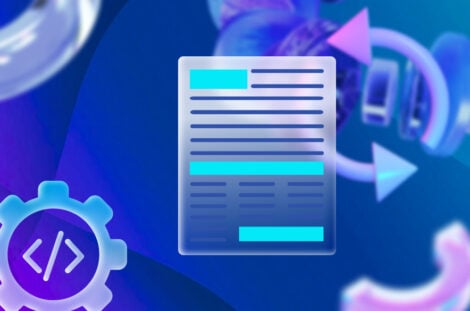
Dear readers 👋
Today we are going to explore a special software testing approach called “Mock testing” which is a specialized technique used in software development processes to test how different parts of a system interact with each other. It involves creating fake objects that stand in for real objects within the system. These fake objects, known as mock objects, can be used to test how different parts of the system interact with each other in a controlled environment. By simulating how the system behaves in different scenarios, developers can identify and fix problems before the software is released to end-users. Overall, mock testing is a valuable technique that helps ensure the quality and reliability of software systems.
While activating unit testing, a mock object is being created to simulate the behavior of a real object in order to test the functionality of other software components that depend on it. The purpose of mock testing is to isolate the component being tested from its dependencies and to ensure that it works as expected even when those dependencies change or are not available.
Mock objects are designed to mimic the behavior of the real objects they replace, but they don’t perform any of the actual functions of the real object. Instead, they respond to method calls in predefined ways and can be programmed to return specific values or generate specific types of errors. This allows developers to test the behavior of a component in a controlled environment, without having to rely on external resources or deal with the complexity of a real object.
Mock testing is particularly useful for unit testing code that depends on external resources such as databases, web services, or other components that are difficult to set up and maintain for testing purposes. By using mock objects, developers can test their code in a repeatable and predictable way, which can save time and reduce the risk of errors in production.
In this blog post, I will be covering:
- Benefits of mock testing in software development processes
- Various challenges you might be facing
- Recommended best practices
- Future outlook of potential improvement areas
Mock Testing Benefits
Mock testing has several benefits that make it a valuable technique in software development:
- Isolation: Mock testing allows developers to isolate the component being tested from its dependencies, which can be especially useful when testing code that relies on external resources that may be unreliable or difficult to set up for testing.
- Control: Mock objects can be programmed to respond to method calls in specific ways, allowing developers to test their code in a controlled environment and simulate different scenarios without relying on real-world data.
- Speed: Mock testing can be faster than traditional testing methods because it eliminates the need for complex setup and teardown procedures and reduces the time required to run tests.
- Flexibility: Mock objects can be easily modified to test different scenarios and edge cases, allowing developers to test their code thoroughly and identify potential issues before they occur in production.
- Debugging: Mock objects can be used to debug code by providing detailed information about how a method is being called and what values are being passed to it.
- Collaboration: Mock objects can be shared among developers, making it easier to collaborate on testing and ensure that code is tested consistently across different environments.
Below you can find a sample code snippet in Python covering which is being used for a specific unit test:

Overall, mock testing is a powerful technique that can help developers improve the quality and reliability of their code while reducing the time and effort required to test it.
Mock Testing Challenges
While mock testing can be a valuable technique, it also presents several challenges:
- Over-reliance on mocks: As mentioned earlier, overuse of mock objects can lead to tests that are brittle, hard to maintain, and don’t accurately reflect the behavior of real-world code. It’s important to use mock objects judiciously and not rely on them too heavily.
- Difficulty in creating mocks: Creating mock objects can be challenging, particularly for complex systems with many dependencies. It can be time-consuming to create mocks that accurately reflect the behavior of the real objects they replace.
- Maintenance: Mock objects can be difficult to maintain, particularly as systems evolve and change over time. As new features are added or dependencies change, mocks may need to be updated to accurately reflect the behavior of the system.
- Test accuracy: Mock objects can provide a false sense of security if they are not designed and implemented correctly. If mocks are not accurate representations of real-world code, tests may not accurately reflect the behavior of the system.
- Integration testing: While mock testing can be effective for unit testing, it may not be sufficient for integration testing, where the behavior of multiple components must be tested together.
- Complexity: As the complexity of a system increases, the complexity of the mock objects used to test it may also increase. This can make it difficult to understand and modify tests, particularly for developers who are not familiar with the system.
As you can see above, while this approach can be a valuable technique, it is important to carefully consider the challenges and ensure that mock objects are used appropriately and accurately reflect the behavior of real-world code.

Mock Testing Best practices
Here are some best practices to follow when using mock testing:
- Use mock testing sparingly: While mock testing can be an effective technique, it’s important to use it judiciously and not rely on it too heavily. Overuse of mock objects can lead to tests that are brittle, hard to maintain, and don’t accurately reflect the behavior of real-world code.
- Mock only what you need: It’s important to only mock the parts of the system that are necessary for testing and to leave the rest of the system intact. This helps ensure that tests accurately reflect the behavior of the system as a whole.
- Use real data where possible: While mock objects can be useful for testing code that relies on external resources, it’s important to use real data whenever possible to ensure that tests accurately reflect the behavior of the system.
- Keep mock objects simple: Mock objects should be simple and easy to understand, with clear and concise code. Complex mock objects can be difficult to maintain and can lead to tests that are hard to understand and modify.
- Write test cases first: Writing test cases before writing code can help ensure that code is designed with testing in mind and that it can be easily tested using mock objects.
- Use a consistent naming convention: Using a consistent naming convention for mock objects and test cases can help make it easier to understand and maintain tests.
- Review and refactor tests regularly: As with any code, it’s important to review and refactor tests regularly to ensure that they remain accurate, maintainable, and reflective of the behavior of the system.
Potential improvement points
Finally, there are several potential improvements that could be made in the future to enhance the effectiveness and efficiency of mock testing:
- Better tooling: As software development tools continue to evolve, there may be opportunities to improve the tooling available for creating and managing mock objects. For example, automated tools could be developed to assist with mock object creation or to help identify areas of the system where mock testing may be most effective.
- Improved integration testing: While mock testing is effective for unit testing, it may not be sufficient for integration testing. Future improvements may focus on developing better techniques for integration testing that build on the strengths of mock testing while addressing its limitations.
- More accurate mock objects: As systems become more complex, there may be a need for more accurate and flexible mock objects that can accurately reflect the behavior of real-world code. This could involve the development of more sophisticated mock object libraries or the use of machine learning techniques to improve the accuracy of mock objects.
- Increased standardization: As mock testing becomes more widespread, there may be a need for increased standardization around mock object creation and management. This could help ensure that mock objects are consistent, well-documented, and easily understood by developers.
- More collaboration: As mock testing becomes more prevalent, there may be opportunities for increased collaboration among developers working on different parts of a system. This could involve sharing mock objects or collaborating on testing strategies to ensure that tests accurately reflect the behavior of the system as a whole.

To sum up, there are many potential areas for improvement in mock testing, and as software development continues to evolve, it is likely that new techniques and tools will emerge to enhance the effectiveness and efficiency of this valuable testing technique.
You can read further the below articles for your reference.










